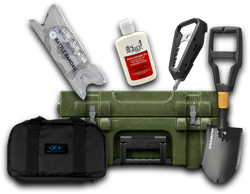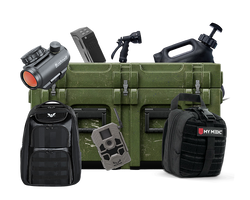
6 Survival Trees To Know
Trees can be a survivalist’s best friend. They provide wood, sap, cordage, and sometimes even water. It is vital to understand how to identify and use different trees to survive in an emergency. You should practice identifying them by both their leaves and bark so that you can find them in any season of the year. Trees survive in all kinds of environments, from areas with high soil moisture to arid environments. The key to surviving using trees is accurate identification, so practice is essential.
Here are our top six trees every survivalist should know:
Willows. Willow trees come in many varieties, but they all have narrow, lance-shaped leaves that cover the branches. They only grow near water, so they are a good indicator that there is a water source nearby. It is best to avoid newly planted trees or young trees, as extracting water from them could create water stress within the plant.

Willows can be used for survival in the following ways:
- Willow bark contains salicin which relieves headaches and inflammation. Chew on small green twigs and swallow the juices.
- In spring and summer, Willow bark will peel away from the wood and make good cordage.
- Young branches are very pliable and can be woven into nets, baskets, traps, etc.
White Birch. White Birch is easily identified by its white, papery bark. White Birch bark is distinct from other white trees because it peels off in thin, paper-like furls. Its leaves are small and oval-shaped with a pointed tip and irregular grooves. It is located primarily in northern climates.

White Birch can be used to survive in the following ways:
- The sap is sweet and drinkable without requiring purification.
- Containers can be fashioned from the bark.
- The bark is some of the best fire starting material found in nature. It lights even when damp.
- Pine tar can be extracted from the bark by heating it over a fire. The tar is a strong adhesive.
Oaks. White Oaks have rounded leaves and Red Oaks have pointed ones. They are some of the tallest trees in the forest and are often covered in acorns.

Oaks can be used for survival in the following ways:
- The acorns are edible (although often bitter).
- Tannic acid (extracted by boiling acorns or inner bark) is antibacterial.
- Oak is a hard wood that is good for making tools.
American Basswood. The American Basswood is common in the Eastern US. It grows in clumps and is often found near water. Its leaves are large, heart-shaped, and coarsely toothed. The leaf buds are a dark red. It is best identified from tongue-shaped leaves that grow at the base of the heart-shaped leaves on mature trees. Hard, nut-like fruits hang from the tongue-shaped leaves in the summer.

American Basswood can be used to survive in the following ways:
- The leaves are edible (and good-tasting!)
- The inner bark fibers make some of the strongest cordage in nature.
- Basswood is great for starting fire by friction.
- The inner bark is edible and can be scraped off using a knife.
White Pine. The leaves on White Pines grow in bunches of five needles. They are evergreens and keep some of their needles year-round. They also produce cones instead of fruits or flowers.

White Pine can be used to survive in the following ways:
- Pine needle tea can be made from the green needles. It is rich in vitamins A and C.
- The inner bark is edible.
- Pine needles are good fire tinder.
- Green pine boughs are perfect for making shelter roofs, insulation, and beds.
- Candles and epoxy can be made from White Pine resin. Resin can also be used to waterproof containers or boats.
- Surface layer root growth (root system) is pliable and strong cordage.
Cedar. Cedar has a distinct smell that will help you identify it correctly. Its leaves are shaped like needles. Its bark is a brownish-red color and is made up of long, fibrous scales that peel away.

Cedar can be used to survive in the following ways:
- Cedar wood is ideal for carving tools.
- Boiled Cedar bark releases tannic acid which is an astringent.
- The smell of some Cedar bark can repel insects.
Maples. Maple leaves have five lobes and the tips are pointed (picture the Canadian flag!) Young maples have smooth, slippery-looking bark. They are most popular in the Eastern woodlands.

Maples can be used to survive in the following ways:
- In the late winter/early spring, Sugar Maples are a great source of drinking water (sap) that doesn’t require purification. It is rich in sugar and nutrients.
- The seeds inside the little “helicopters” on the leaves are edible like edamame. Boil them and remove the outer casing.
- Young maple leaves are edible. Boil them to decrease bitterness.
It is important that every survivalist be able to identify each of these trees (in any season) and know how to utilize them in an emergency situation. It may take several years of studying to become a tree expert, so do not give up. From making medicine, to building a shelter, to starting a fire, these six trees can make survival significantly easier and more comfortable. It is important to preserve tree survival as well as our own Always keep trees planted so that survivalists will always have the tools to be prepared.
Share this article







